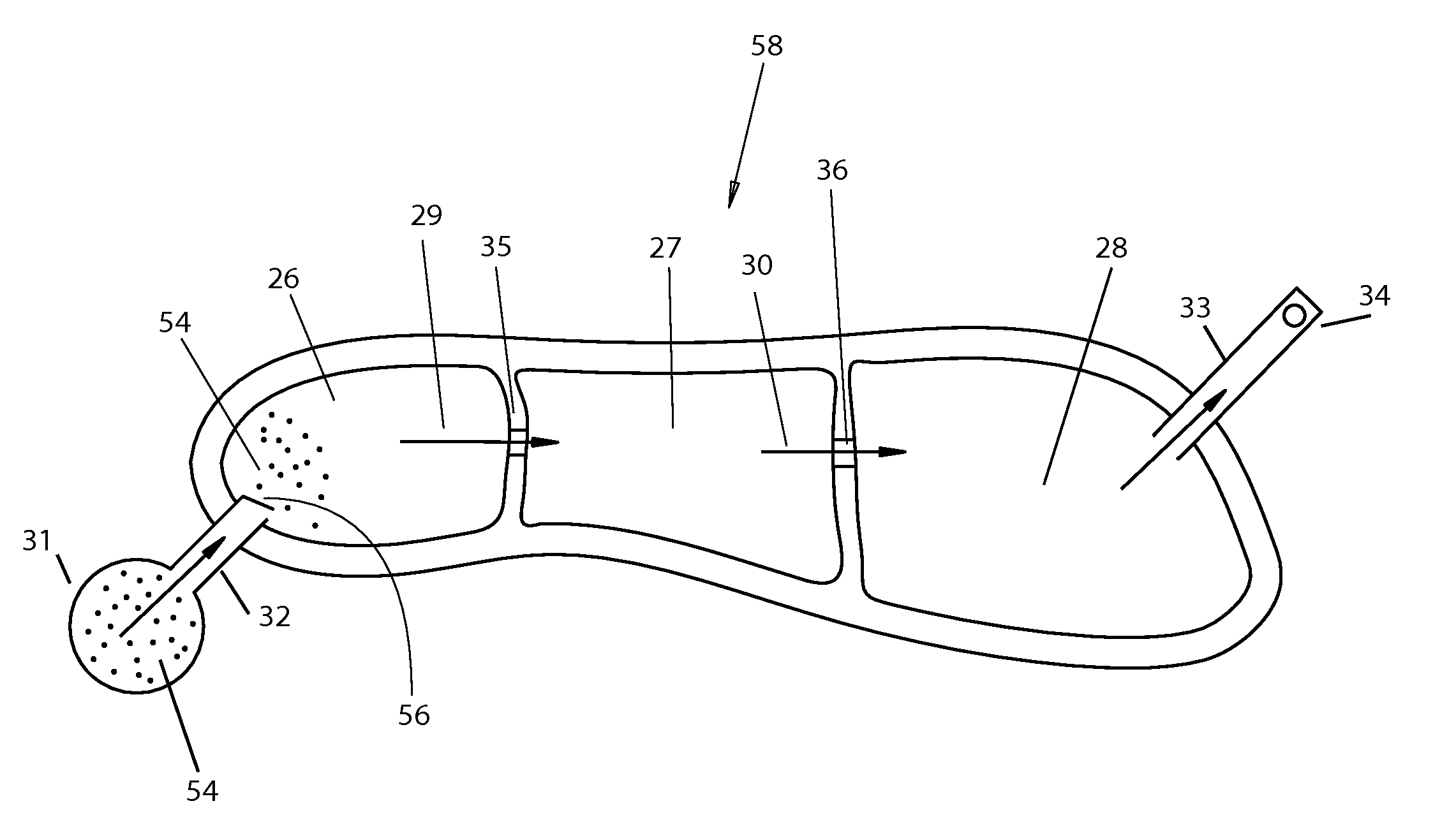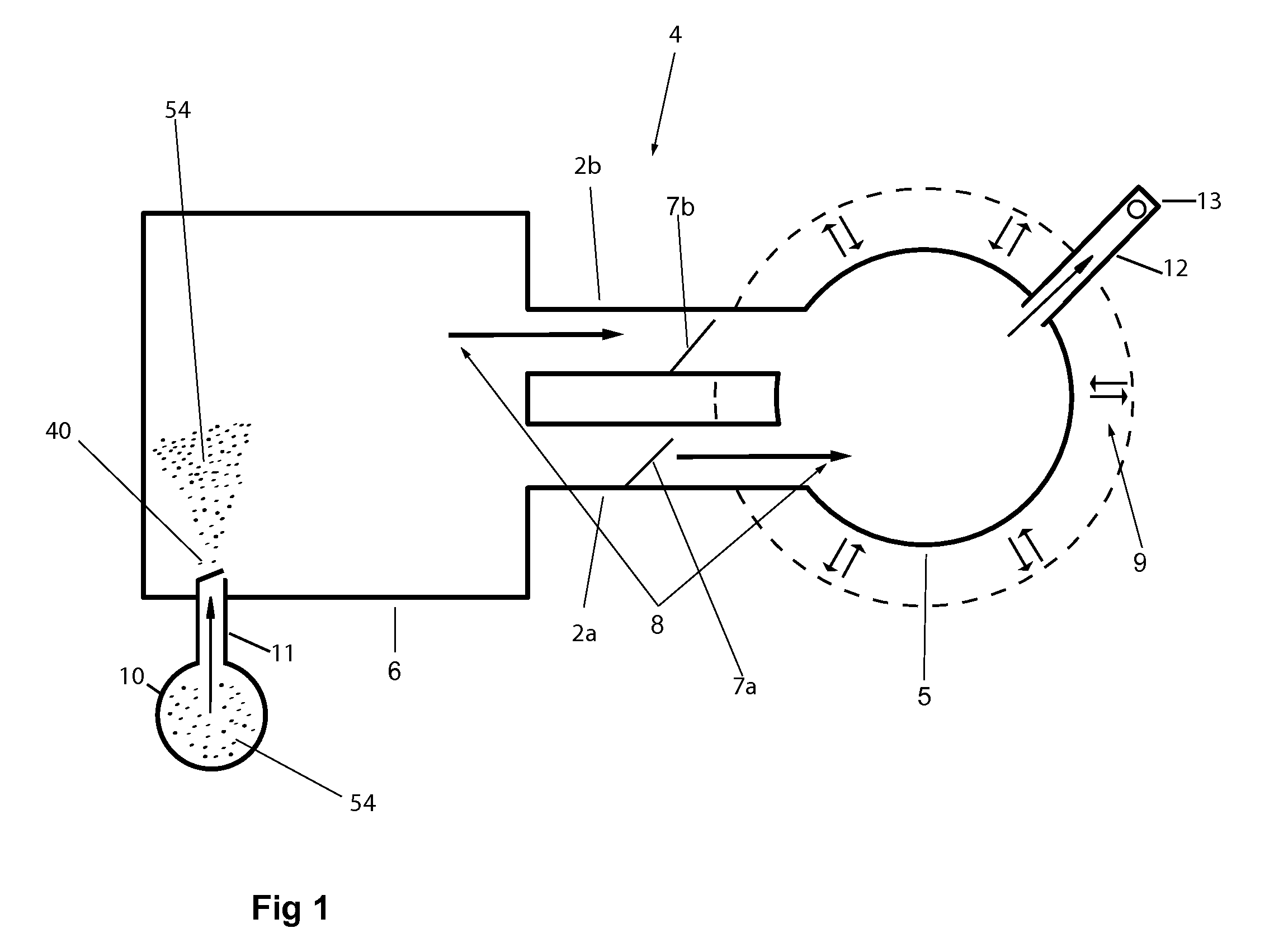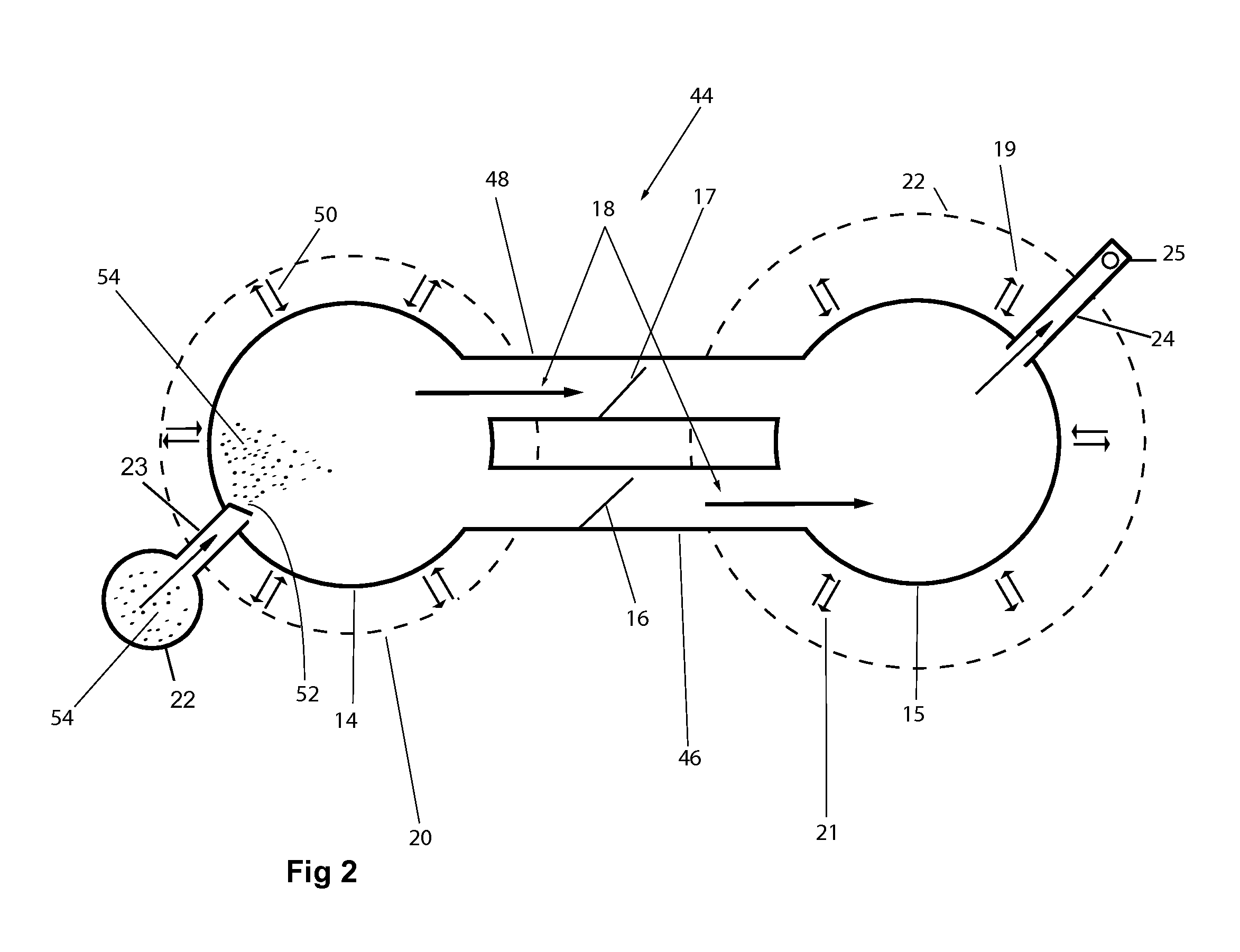Cell flow device and method that provides a sequential linear flow of pressure resistance
a cell flow and pressure resistance technology, applied in the field of cushioning and padding constructions, can solve the problems of lack of utility, device and method of cell flow technology, and inapplicability of new and unique technology, so as to improve physiology, support our anatomy, and improve comfor
- Summary
- Abstract
- Description
- Claims
- Application Information
AI Technical Summary
Benefits of technology
Problems solved by technology
Method used
Image
Examples
first embodiment
[0031]In accordance with the present invention, a family cell of the present invention is illustrated in FIG. 1. Referring to FIG. 1, the family cell is depicted in 4. The secondary continuance cell 5 is in the format of an unequal size, or decreased volume capability. Further illustrated is a non-congruent shaped primary cell 6. The secondary cell 5 and the primary cell 6 of this family cell 4 in FIG. 1 are connected by conduits 2a and 2b with respective properly and variable calibrated valves 7a and 7b therein. The family cell with the use of an operator, motor, or any form of pressure resistance, sequentially transfers, air, gas liquid, or other substrate or mixture thereof, with the advantage of its properly calibrated and variable valves 7a and 7b by a sequential linear flow of pressure resistance, generally referenced as 8, from the fluidly connected primary continuance cell 6 to its familiar interactive and fluidly connected secondary continuance cell 5. The secondary cell 5 ...
embodiment 58
[0037]FIGS. 3A and 3B, show a further embodiment 58 of the present invention. FIG. 3A shows a top view of the embodiment while FIG. 3B shows a side view thereof. FIGS. 3A and 3B a number of continuance cells 26, 27, 28 with varying degrees of elastomeric potential 37, 38 and 39.
[0038]In FIGS. 3A, and 3B the continuance cells possess the same differences in elastic deformation capabilities as described above in FIG. 2. Furthermore the cause of said elastomeric abilities are the similar. In FIG. 3B there is a decrease elastomeric capability of the materials of the continuance cells from greatest in cell 26 to weakest in cell 28. In this embodiment the continuance cells have the added capability of operator force to further media from cell 26, to 27, and then to 28. More specifically the down force of heel strike of the operator on the continuance cell 26 in FIG. 3B will together with the feature of elastic potential energy inherent to the elastic deformation 37 of said cell 26 will fu...
PUM
 Login to View More
Login to View More Abstract
Description
Claims
Application Information
 Login to View More
Login to View More - R&D
- Intellectual Property
- Life Sciences
- Materials
- Tech Scout
- Unparalleled Data Quality
- Higher Quality Content
- 60% Fewer Hallucinations
Browse by: Latest US Patents, China's latest patents, Technical Efficacy Thesaurus, Application Domain, Technology Topic, Popular Technical Reports.
© 2025 PatSnap. All rights reserved.Legal|Privacy policy|Modern Slavery Act Transparency Statement|Sitemap|About US| Contact US: help@patsnap.com



